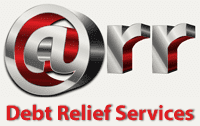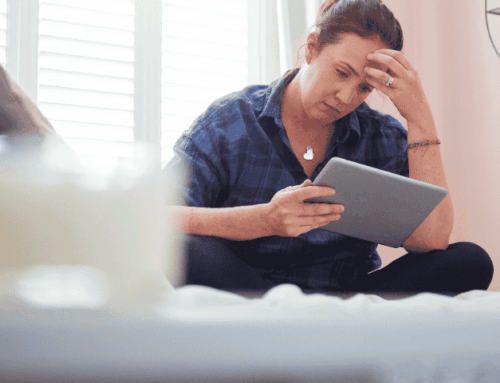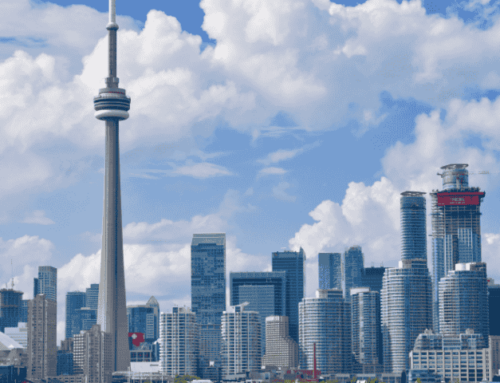Do you have unpaid taxes that have become a financial burden? The Canada Revenue (CRA) Agency has the ability seize your assets in order to collect your unpaid taxes. These CRA tactics may put you in an even greater financial risk—one that can easily spiral and become difficult to manage.
Don’t wait until it is too late! The first thing you need to consider is to consult a Licensed Insolvency Trustee like Andrea Orr. We can help solve your tax problems, so you can get back to focusing on what truly matters—your life and your loved ones.
What You Need To Know About CRA’s Collections
The Canada Revenue Agency (CRA) is empowered by the Federal, Provincial, Territorial, and First Nation Governments to handle Canada’s tax revenue, benefits, and other related programs. The agency is responsible for handling Canada’s tax credits and social benefit programs.
The CRA has collection powers used to collect outstanding taxes such as audits, fines and penalties, and other legal options. Make no mistake, the CRA can and will take action to collect money owed, including freezing your bank accounts, garnishing your wages, seizing your investments and more.
Facing the CRA with all its collection powers, means, and authority to use them can seem like a daunting task. However, while the agency does possess special powers, it does not mean you should simply give up and hand over what they ask. On the contrary, there are several ways you can reduce or eliminate the tax debt owed.
Learn more about 4 things you need to know about tax debt and how to get it under control
1. Negotiate the Payment Plan
One option is to negotiate a payment plan you can afford. You can come to terms with The CRA for a fixed monthly payment that is reasonable to pay back over time.
A. Payment Arrangements
If you cannot pay off your tax debt, you can apply to the CRA for a payment arrangement. A payment arrangement is a contract in which the CRA agrees to accept a portion of your total outstanding tax debt in exchange for an immediate lump sum payment as well as ongoing monthly payments.
B. Partial Payment
Partial payments are payments you make to the CRA after agreeing on a payment arrangement. If you start making regular payments on a tax debt, the CRA will initially apply these payments to the oldest debt first.
C. Tax Payer Relief Options
Taxpayer relief provisions are aimed at helping taxpayers in financial difficulty resolve their tax debts by offering them concessions. However, these provisions are not intended to avoid paying your tax debt. Each taxpayer relief provision has specific eligibility and application requirements that must be met before you can apply for assistance. Depending on your situation, you may be able to use taxpayer relief provisions to facilitate payment of your outstanding taxes.
2. File a Personal Bankruptcy
Your Personal Bankruptcy filing can be a way to eliminate your debts, including unpaid taxes. Bankruptcy will stop all creditors from collecting from you and offer you the chance to start fresh with a clean financial slate. By filing for bankruptcy, you will be allowed to eliminate your debt legally through a regulated process that forces creditors to “write off” your debt. Unexpected financial setbacks such as job loss, illnesses, or investment losses can make meeting tax obligations difficulty if not impossible. Insolvency Trustees like Andrea Orr help thousands of Canadians each year get back on their feet after unfortunate financial hardships.
3. File a Consumer Proposal
A Consumer Proposal is an alternative to a bankruptcy. A consumer proposal is a legally binding agreement to pay creditors. A Licensed Insolvency Trustee will work with you to determine if filing for a consumer proposal is the best way to begin tax debt relief. Once approved, they will set up an easy and affordable payment plan. This means you will have a payment over a set period that is within your budget to satisfy your debt obligations. It will have a lesser impact on your credit than a traditional bankruptcy, and helps you gain immediate protection from all collection efforts, including wage garnishment, account freezes, and CRA seizures.
4. Debt Consolidation
Debt consolidation means taking out one large loan to pay off all your smaller debts, including your CRA debt. If you qualify for low-interest rate loans and take out a loan that covers all your debts, this can be a good solution for consolidating your debt. A more extended repayment period means paying lower interest rates than having multiple loans, making this a smart financial move.
Read more about 6 Signs you Need to File a Bankruptcy
Paying off your tax debt can seem like an uphill battle for many Canadians. Whether it is a small business owner or a high-income earner, there is always a possibility that a CRA audit may be coming around the corner. When this happens, taxpayers may be concerned about what will happen to their assets if they are in arrears on taxes owed to the government.
Contact Andrea Orr today to find out how our professional tax resolution services can help!









Leave A Comment
You must be logged in to post a comment.